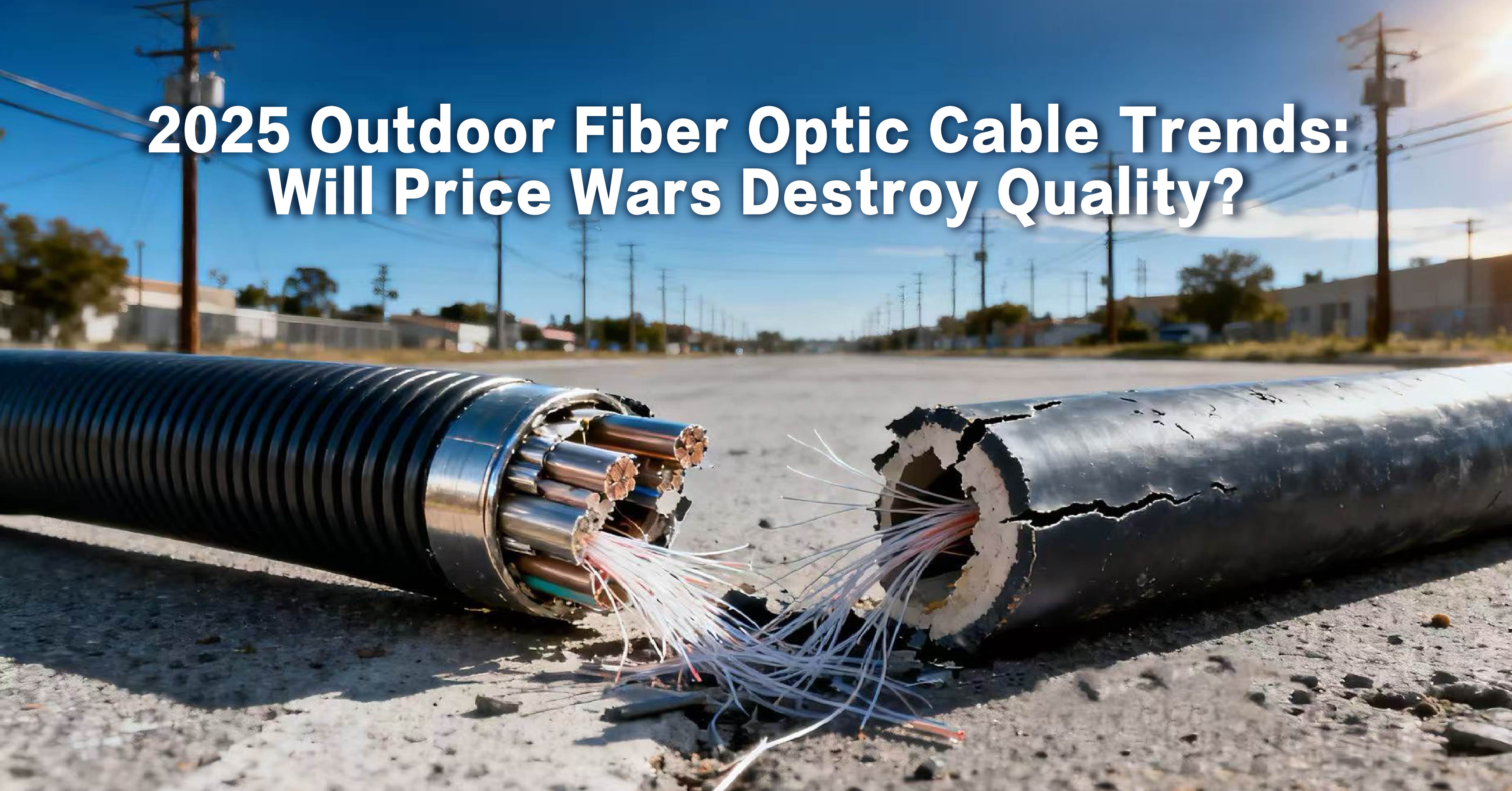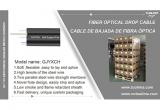
In 2025, the global outdoor fiber optic cable market is entering a critical stage. Telecom operators, ISPs, and governments are all racing to expand 5G networks and FTTH (Fiber-to-the-Home) solutions. Yet alongside this rapid growth, an unsettling question hangs in the air: Will aggressive price wars destroy cable quality and long-term network reliability?
Rising Demand Driven by 5G and FTTH
The demand for outdoor fiber optic cables has never been stronger. With 5G backhaul and nationwide FTTH rollouts accelerating in Latin America, Africa, and Southeast Asia, network operators require massive amounts of ADSS cable, armored fiber optic cable, duct cables, and micro cables. A recent industry report from Lightwave Online highlighted that fiber deployment grew by 18% globally in 2024, with projections showing similar or higher growth in 2025.
For example, Brazil announced a $2.3 billion FTTH expansion program this year, while African telecom companies are increasingly adopting armored fiber optic cables for direct burial to reduce maintenance costs caused by rodents and soil erosion. The surge in demand is clear — but so is the temptation for manufacturers to cut corners.
The Temptation of Price Wars
The outdoor fiber optic cable industry is not immune to the pressures of cost competition. Many new entrants in Asia are selling low-cost ADSS cables and FTTH cables by reducing material quality, skipping international certifications, or outsourcing manufacturing to uncertified subcontractors.
The problem? These “cheap” cables often fail within just a few years. A case study in Colombia showed that a major ISP had to replace hundreds of kilometers of non-standard outdoor cables after water penetration and sheath cracking caused widespread outages. The initial savings turned into millions in replacement costs — not to mention lost customer trust.
Why Standards Matter: IEC and ITU as Quality Gatekeepers
Compliance with IEC 60794 mechanical tests, IEC 60332 flame resistance, and ITU-T G.652/G.657 optical performance standards is not just paperwork. These international standards are what separate a high-quality outdoor fiber optic cable from a ticking time bomb.
ADSS cables for aerial installation must withstand ice, storms, and wind pressure.
Armored fiber optic cables for direct burial must resist soil acidity, rodents, and crushing forces.
Micro cables and FTTH drop cables must guarantee low attenuation and bending resistance during dense urban deployments.
Ignoring these standards in the name of lower cost is equivalent to building a skyscraper without structural safety codes.
Industry Trends Shaping 2025
5G Backhaul Expansion – Outdoor fiber optic cables with low attenuation and high tensile strength are critical for long-distance aerial spans.
FTTH Acceleration in Developing Regions – Lightweight and compact FTTH cables are in high demand, particularly in South America and Africa.
Sustainability and Green Materials – Telecom companies in Europe now demand eco-friendly fiber optic cables with recyclable jackets to comply with environmental regulations.
Stable Supply Chain Partnerships – After the pandemic and recent geopolitical tensions, operators prioritize reliable fiber optic cable suppliers over opportunistic low-cost vendors.
Price vs. Quality: A False Choice
Buyers are increasingly realizing that the so-called “savings” from price wars are short-lived. A cheap outdoor fiber optic cable that fails in three years is far more expensive than a certified cable that lasts 25+ years.
In fact, according to a 2024 IEC report, properly manufactured ADSS cables and armored cables can remain operational for 25–30 years if installed correctly. This makes compliance not only a technical requirement but a strategic business decision.
Tuolima: A Reliable Partner Amid the Price Wars
This is where Tuolima stands apart. With over 20 years of experience as a fiber optic cable manufacturer and solutions provider, Tuolima does not participate in destructive price wars. Instead, the company focuses on:
Delivering high-quality outdoor fiber optic cables that meet IEC and ITU standards.
Offering a full product portfolio including ADSS cable, armored outdoor fiber optic cable, FTTH drop cable, and duct installation fiber cables.
Supporting global partners with project consulting, custom cable designs, and reliable after-sales service.
Tuolima has supplied large-scale projects across South America, Europe, and Africa, helping operators avoid the pitfalls of substandard suppliers. For example, in a recent FTTH project in Peru, Tuolima’s low-bending-loss FTTH cables reduced installation errors by 30%, cutting deployment time significantly.
Conclusion: The Real Trend in 2025
The biggest trend in 2025 is not just about new cable designs or higher demand. It is about choosing quality over price wars. Outdoor fiber optic cables are the backbone of global connectivity. Sacrificing quality for short-term savings undermines not only networks but also the trust of millions of end-users.
For global buyers, the message is clear: work with reliable fiber optic cable suppliers who prioritize compliance, durability, and service. Tuolima embodies this philosophy, offering future-proof outdoor fiber optic cable solutions that align with the real demands of the 5G and FTTH era.
If your network project requires ADSS cable for extreme weather, armored cable for direct burial, or FTTH drop cable for urban rollouts, Tuolima is your trusted partner in 2025 and beyond.
Related Products
IP68 Fiber Optic Splice Closures — Designed to provide secure and reliable protection for fiber optic joints
Aug 02-2024

Enhancing Campus Connectivity: GJYXCH Fiber Optic Cable in Educational Networks
Jan 09-2024

Elevating Urban Infrastructure: GJYXCH Fiber Optic Cable in Smart City Networks
Jan 07-2024